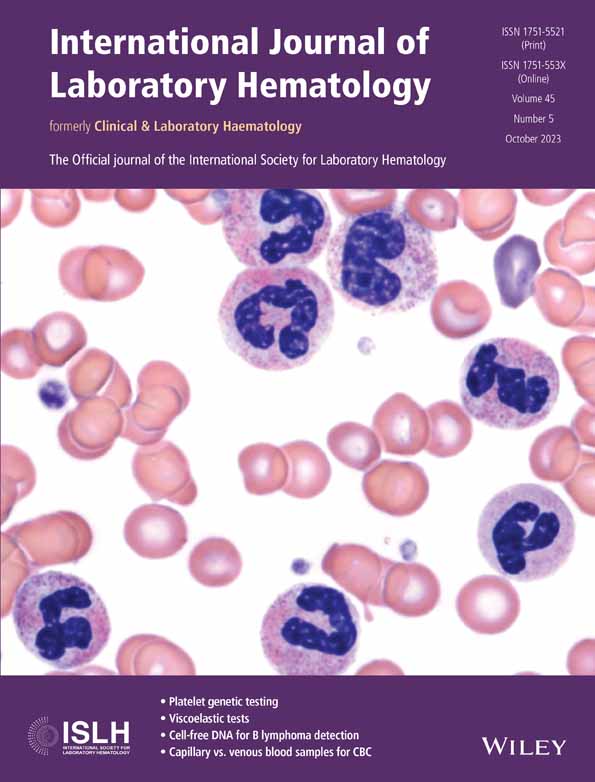Measurement of immature platelet fraction is useful in the differential diagnosis of MYH9 disorders
Abstract
Introduction
Although the presence of large and giant platelets is important in screening for MYH9 disorders, platelet morphology evaluation is dependent on operator subjectivity. Immature platelet fraction (IPF%) is widely used in clinical practice because of its rapidity and reproducibility; however, IPF% has been rarely analyzed in MYH9 disorders. Therefore, our study aimed to clarify the usefulness of IPF% in the differential diagnosis of MYH9 disorders.
Methods
We assessed 24 patients with MYH9 disorders, 10 with chronic immune thrombocytopenia (cITP), 14 with myelodysplastic syndromes (MDS) with thrombocytopenia (<100 × 109/L), and 20 healthy volunteers. Platelet-related data, including IPF% and platelet morphology (diameter, surface area, and staining), were retrospectively analyzed.
Results
Median IPF% in MYH9 disorders, 48.7%, was significantly higher than in all other groups (cITP: 13.4%, MDS: 9.4%, controls: 2.6%). IPF% in MYH9 disorders was significantly negatively correlated with platelet count and significantly positively correlated with the diameter and surface area of platelets, but a correlation was not found between IPF% and platelet staining. The area under the curve of IPF% for the differential diagnosis of MYH9 disorders was 0.987 (95% CI: 0.969–1.000), with a sensitivity of 95.8% and specificity of 93.2% when the cutoff value of IPF% was 24.3%.
Conclusion
Our study strongly suggests that IPF% is useful in the differential diagnosis between MYH9 disorders and other types of thrombocytopenia.
CONFLICT OF INTEREST STATEMENT
The authors declare no conflicts of interest associated with this manuscript.
Open Research
DATA AVAILABILITY STATEMENT
Data are available on request.




